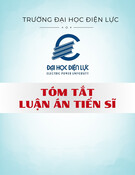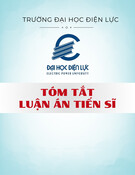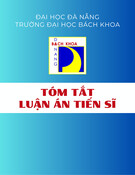
2
INTRODUCTION
Urgency
The International Maritime Organization (IMO) mandated the use of ultra-low
sulfur diesel (ULSD) fuel in shipping from January 1, 2020. Compliance with the
new regulation on sulfur content in the fuel used for ships when ships operate in
an emission control area can be achieved by using fuel with a sulfur content of
0,0015% at all times of ship operation or switching from high-sulfur fuel to
0,0015% sulfur fuel when the ship enters an emission control area.
Fuel switching during the ship operation can present a number of problems
related to fuel characteristics such as viscosity, lubricity, flash point, combustion
quality. Therefore, for ships using ULSD fuel, it is necessary to equip a cooler
system to overcome the disadvantage of ultra-low viscosity like ULSD.
Due to this reason, the combination of two fuel types such as ultra low-
viscosity ULSD and high-viscosity Biodiesel (BO) fuel aiming to form a new fuel
type, which satisfies not only the required viscosity and renewable properties but
also the requirement of reducing the cost of ship operation will have a great
significance in terms of economy, technology and emissions. However, the
homogeneity of the fuel after mixing is found to depend mainly on the mixing
method.
Currently, mechanical fuel mixing technologies have been being mainly used,
indicating that the quality of mixed fuel only stands at an acceptable level as well
as the mixing time is quite long. Meanwhile, using ultrasonic waves to create
shocks from the bubbles appearing within the 2 liquid phases is considered as a
potential solution to improve the homogeneity of the 2 liquid-phase blend such as
ULSD fuel and Biodiesel.
Based on the above-mentioned reasons, the method of using ultrasonic waves
has been chosen to mix ULSD and Biodiesel fuels to produce a homogeneous fuel
type with some properties similar to traditional diesel fuel for the using purpose
for ships aiming to meet IMO regulations, to reduce operating costs, and to protect
the environment.































